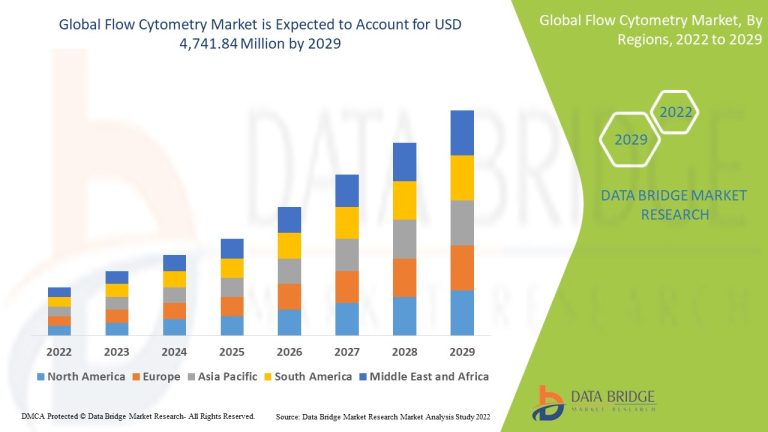Last Updated on March 11, 2024 by admin
Introduction
The rising incidence of chronic illnesses, the rising need for new technologies in the flow cytometry market, which boosts its demand, and the rising investment in R&D, which promotes market expansion, are the main drivers of the global flow cytometry market. The current rise in healthcare spending in both developed and developing nations is anticipated to give businesses a competitive edge as they expand into brand-new, cutting-edge flow cytometry marketplaces. The high price of flow cytometry equipment, however, is expected to impede the expansion of the worldwide flow cytometry market.
Definition
The screening of cells from a heterologous cell mixture using flow cytometry is a crucial step in the cell sorting, counting, protein regeneration, and engineering processes. Common applications of flow cytometry include the analysis of cell surface and intracellular molecule expression, the characterization and classification of different cell types in a heterogeneous cell population, the assessment of the purity of isolated subpopulations, and the measurement of cell size and volume. It allows for the concurrent analysis of several parameters for a single cell. In a flow cytometer, lasers generate light that is then scattered by the cells in the sample, captured by detectors, and transformed into signals for analysis and measurement.
The global market for flow cytometry is expanding as a result of increased innovations and technologies, an increase in the number of competitors in the industry, and the introduction of innovative products.
Market Growth Factors
- Globally rising incidence and prevalence of HIV/AIDS and cancer, expanding public-private initiatives in the fields of microbiology and immuno-oncology research, expanding use of flow cytometry techniques in academic and research settings, technological advancements, rising integration of AI platforms into flow cytometry workflows, and advancements in flow cytometry software are all factors driving the market’s expansion.
- Flow cytometry has emerged as an essential tool for safety and exploratory goals during the drug research and development processes.
Key Benefits
- In order to help readers spot the most promising market opportunities, this research offers a thorough quantitative analysis of the most recent flow cytometry market trends and future estimates for the years 2022 to 2030.
- From 2022 to 2029, market growth is anticipated for the global flow cytometry market. According to Data Bridge Market Research’s analysis, the market is predicted to increase at a CAGR of 11.2% from 2022 to 2029 and reach USD 11,016.73 million from USD 4,741.84 million in 2021.
- An in-depth market research includes regional analysis, which is expected to give stakeholders a thorough awareness of the current trends so they may create strategies for certain regions.
- The variables influencing and restraining the growth of the flow cytometry market are thoroughly examined.
- A thorough examination of several geographies yields information that should enable businesses to effectively plan their company actions.
- This study profiles the major market participants and carefully examines their business models to assist readers understand the industry’s competitive landscape.
Market Restraining Factors
- Most end users require a lot of flow cytometry equipment to conduct several research projects at once, including clinical laboratories, significant research institutes, and pharmaceutical companies. The initial cost for the acquisition and upkeep of these gadgets thus increases dramatically.
- Budget restrictions make it challenging for university and research laboratories to buy such instruments. Maintenance fees and a variety of other indirect costs contribute to an increase in the overall cost of purchasing these devices.]
Browse for more details
https://www.databridgemarketresearch.com/reports/global-flow-cytometry-market
COVID-19 Impact Analysis
During the original COVID-19 outbreak, the COVID-19 pandemic had a positive impact on the prospects for the flow cytometry industry. The usage of flow cytometry as a method has increased along with the use of reagents in research and clinical trials, which has increased the market share of flow cytometry reagents. For instance, Cytek Biosciences Inc. supported medical professionals and academics who were investigating the impact of the COVID-19 virus on human immune systems in March 2020. Compared to recovered donors or healthy donors, T- and B-cell frequencies were lower in COVID-19 patients.
Why choose data bridge market research
Clients may use market research from Data Bridge to help them make wise business decisions. For a variety of industries, including chemicals, materials, energy, healthcare, and technology, we provide market intelligence studies that guarantee pertinent and fact-based research. Data Bridge Research offers strategic, unbiased insights with a thorough grasp of different business situations. More than 300 multi-country market studies are completed annually by data bridge Research

